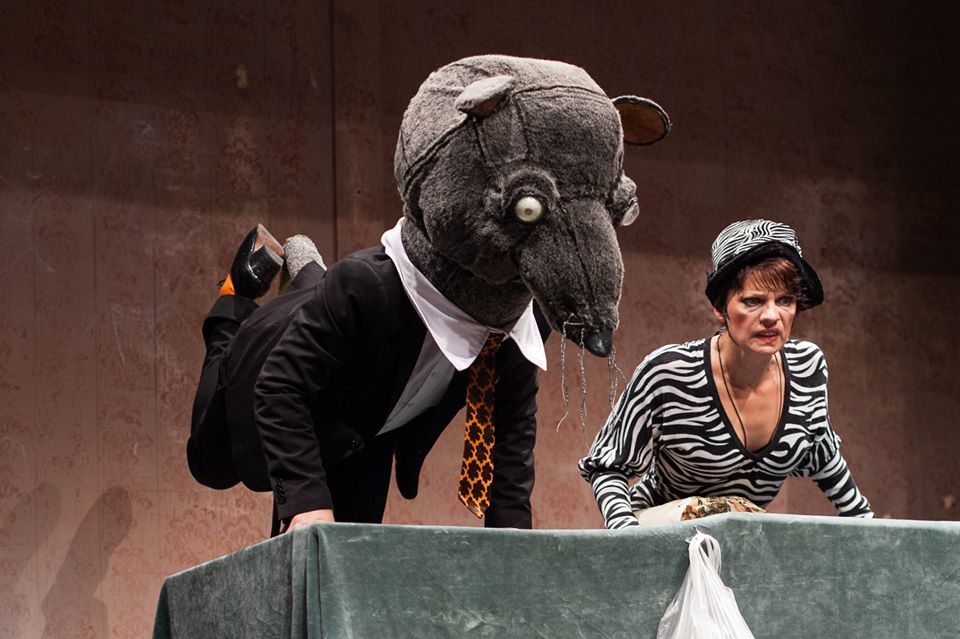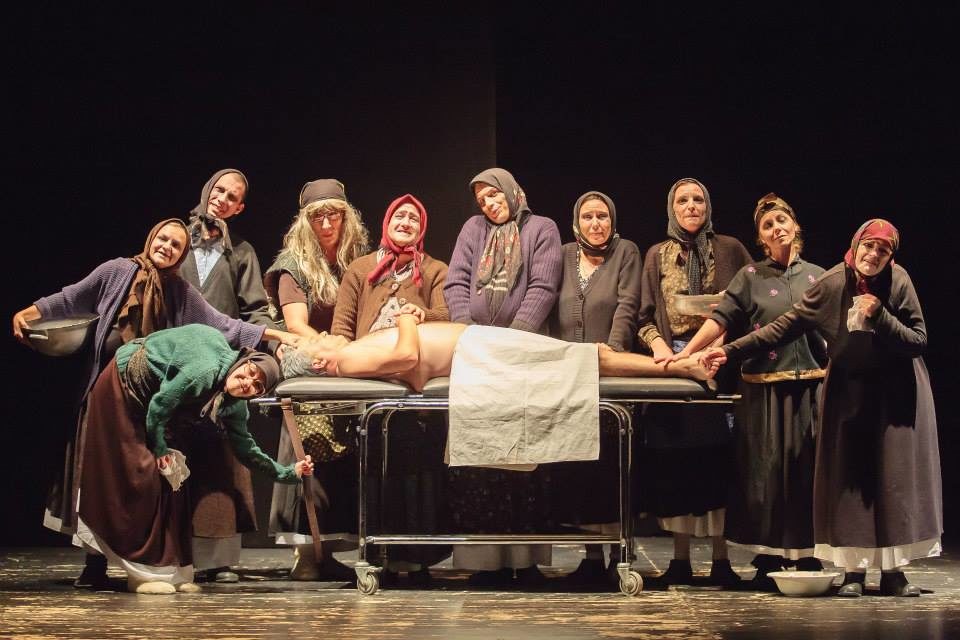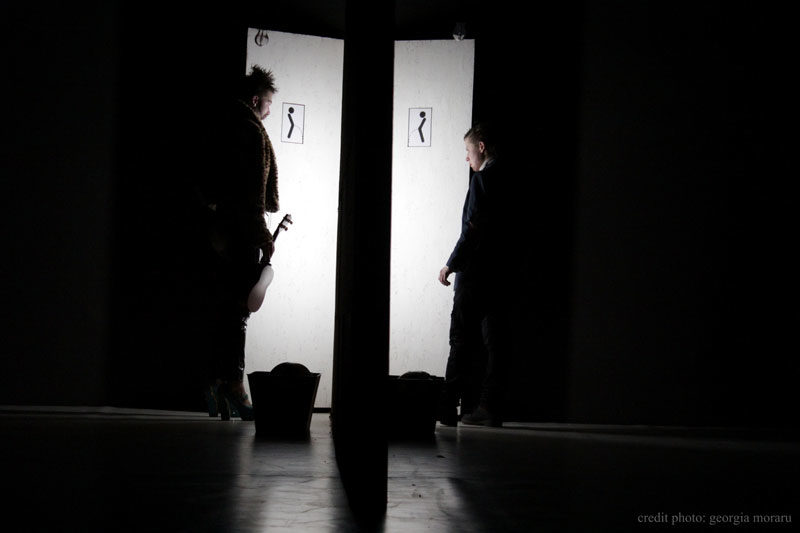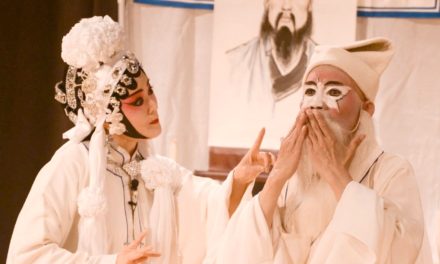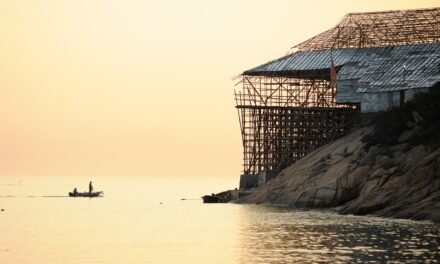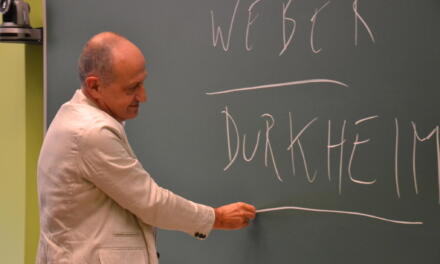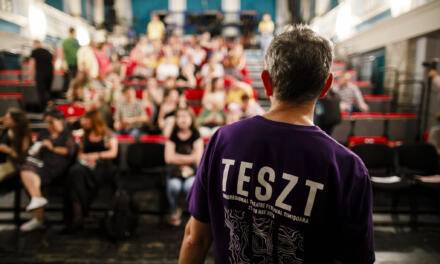Historical Context
Twenty‑five years after the fall of the communist regime, the performing arts in Romania find themselves in a state of heterogeneity in terms of aesthetics and content, and confusion in terms of direction. In a predominantly state‑funded system—a network of theatres financed by either the ministry of culture or the local authorities (city halls and county councils)—theatre has remained a prisoner of the notion of “art for art’s sake” promoted during the communist period. Repertory theatre has cultivated a conservative mentality (among artists and the public), has favoured classic and modern over contemporary playwrights and has worked according to Stanislavski’s method (arts education in Romania to a large extent being based on psychological realism). Theatre companies have a pre‑determined staff, and young actors and directors (of which there is an increasing number thanks to a growth in the number of students) find it hard to enter the state theatres, where, once they do get in, they more often than not reproduce the aesthetics of their teachers (the development of a student’s artistic sensibilities and independent thought are not encouraged in education).
These historical circumstances described briefly above lead to the flight of artists—mainly young and independent, though, in time, also those working for state theatres, tired of perpetuating the same types of performance—to underground venues, where they put on plays they finance either themselves, through crowdfunding or with the help of the AFCN. (The AFCN, or “The Administration of the National Cultural Fund,” redistributes to the cultural sector—the performing and visual arts, publishers, heritage, etc.—state funds obtained from gambling or taxation based on competitions for projects. Though not exclusively aimed at independent artists, the AFCN is essential to the survival of the independent culture sector, and yet it struggles itself to survive due to the irregular receipt of funds and an unstable internal organisation that makes it politically vulnerable.) Initially, artists with a clear direction, or one they were looking to clarify, those who wanted to stage productions deemed unacceptable in the state theatres (which, in 1990–2000, were still adverse political and social topics, experimental theatre and contemporary playwrights, reluctance that still persists today), turned towards the independent sector. This led to the emergence of the first examples of “engaged theatre,” which took a critical view of society and social, political, economic structures and examined the recent past (the interwar, communist and post‑communist periods) and the present. In the capital, two independent theatre venues stood out from the rest: LUNI Theatre, at Green Hours, a bar where jazz was played and theatre performed and where many of a new generation of artists began their careers; and ACT Theatre, a venue dedicated exclusively to theatre, created around the actor Marcel Iureș and primarily intended for contemporary drama. The last ten years have seen an explosion in the independent sector, albeit predominantly in commercial theatre (relationship‑based comedy and stand‑up) performed in cafés and bars. For some people, independent theatre has become an alternative to the “rigid” and “pretentious” theatre, in their opinion, offered by the state; for others, it is the only form of culture. Commercial theatre has grown its own stars (who bring in the public), established its own venues (which are also places to eat and drink, such as Godot Café‑Theatre) and even held its own festivals.
The term “independent” needs to be clarified. The Romanian understanding of the word is generous and generic, and includes all forms of theatre that do not rely on permanent funding from the state. (The exception being productions that receive their funding from the AFCN, which has a clear, limited budget with which to fund certain projects for a short and finite period of time.) Consequently, any production that does not receive regular money from the state is deemed “independent.” This clarification is necessary, because the generosity of the term as it is understood in Romania has created a need for differentiation within the phenomenon itself, i.e., in terms of commercial theatre, engaged theatre (social, political, critical, etc.), private theatre and experimental theatre, which are all different, with different aims, aesthetics and audiences, even if they all fall under the independent umbrella.
Artists with a critical view of society would finance productions exclusively through the AFCN or crowdfunding, while in recent years, their voice has become more audible (in terms of prizes, international success, etc.), which has led to their acceptance in the state sector. These are usually international co‑productions with the financing structured in such a way that the local host theatre does not have to “risk” much, at least not financially. The success of these productions has seen the state theatres relax their position towards critical theatre, with the result that, although the general state of paralysis on a managerial level remains intact, contemporary playwrights, the idea of civic engagement and young artists are slowly being welcomed on official stages. A normal exchange of ideas, aesthetics and generations between universities and theatres is still a long way off, but the world of Romanian theatre nonetheless appears to be changing.
The Mainstream
In Romania, the script is still central to the play and the director still dominates the creative process (authority and authoriality). Auteur plays, with a strong vision of the script and a recognisable style, account for the majority of productions found in the state theatres (i.e., the mainstream) and have allowed for the rise of important directors, such as Silviu Purcărete (the creator of spectacular, predominantly visual, baroque plays). Indeed, the state theatres are dominated by influential directors (in their 50s) who remain relevant today despite the fact that their individual performative language, sufficiently polished in each instance to be considered an individual style, is not particularly open towards the latest trends. Mihai Măniuțiu, Andrei Șerban, Gabor Tompa, Victor Ioan Frunză and Alexandru Darie, for example, are all formidable directors, de facto “dictators” of the creative process, yet nonetheless attached to their own aesthetics.
1. Alexandru Dabija
A director of great refinement in the way he works with his actors, Alexandru Dabija possesses a sharp sense of humour and a profound understanding of the script. Dabija has an ongoing project involving Romanian fairy tales, some of which are written by Ion Creangă (an iconic figure of children’s literature in Romania), which he transposes for the stage within an atemporal universe with contemporary elements. Dabija recreates micro‑village communities (on the verge of extinction), stripped of their fairy-tale aura, for he is highlighting the harshness and shortcomings of rural life, albeit with a sense of warm understanding and jovial humour and without judging and without hiding anything, because, for him, these ancestral stories of formation (Bildungsroman) in concentrated form are cross‑sections of contemporary society. Dabija’s approach explores the fundamental elements of community: sexuality (OO!, The Youth Theatre in Piatra Neamț), religion (Absolute!, ACT Theatre, a play that creates a microcosm from the perspective of the Wandering Jew, demystifying the symbols of figurative religion—God and St. Peter—and those of folklore—the She‑Devil and the Grim Reaper), revenge (The Goat and Her Three Kids, ACT Theatre, a play that identifies the subtext of horror in the story and focuses on the noir imaginary in children’s literature) and relationships between parents and children and the (de)mystification of love (Sânziana and Pepelea, The National Theatre in Cluj). Dabija likes to paint a picture of group figures (in A . . . Crate, The Youth Theatre in Piatra Neamț, the old women of the village constitute a form of traditional moral authority). He reveals, sometimes in a licentious manner, the seductive nature of the sensational, the funereal and gossip in rural society and the way in which an individual is subjected to the judgement of collective consciousness. The rural world is no less competitive and harsh than its urban counterpart. The parodic image of one of Rembrandt’s paintings, “The Anatomy Lesson of Dr. Nicolaes Tulp,” recreated in A . . . Crate with the audience made up of the old women of the village and the deceased Old Man with Rooster (the last man in the village) as the “subject of dissection,” resembles a grotesque execution: a collective assassin (the women) and a symbolic victim (the man). An everyday domestic murder.
With their succulent humour and delicious perspective, Dabija’s fairy-tale‑based plays—often accompanied musically by the composer Ada Milea and her absurd sense of humour—reveal, with caustic indulgence, the degradation of human nature.
2. Radu Afrim
One of the most powerful voices in Romanian theatre is that of Radu Afrim, a complex artist, director, photographer, who majored in literature and is a music lover with his own inimitable universe (as proven by the failure of his imitators) that is luxuriant and intelligent, dominated by emotion and aesthetics. Afrim uses a complex performative language, with supra‑ and extra‑realities, and is able to see beyond the visible world, as if a door has been opened to him, taking him to an unknown place in which indescribable suffering and beauty are gathered, traces of which are felt in the script. For Afrim, the script provides an impulse to explore these empathetic territories, for an architecture of emotion which he constructs predominantly aesthetically. His inventory contains kinky characters and anti‑heroes (maltreated children, abused adolescents, vulnerable old people), vicious and vitiated relationships, unhealthy sexuality and torturous family conflicts expressed though depression and suicide. It is the world of the contemporary drama, a form of literature the director promotes in his own extreme way, choosing only scripts previously unstaged in Romania. On rare occasions he has also staged classic works, but he passes these through a personal filter so powerful they become his own (rewritings that go against the original). Afrim’s fans include rock stars, who follow him from one theatre to the next. Yet he also has his detractors, who, though perhaps less so than his fans, are still sufficiently vocal as to maintain his status as a controversial artist. With a career that began in independent theatre and rapidly saw him accepted by the state theatres, Afrim has always remained an alternative artist within the mainstream. He imposes his vision, scripts and way of working with impetuosity. And he has created “Afrimesque” spaces within state theatres without being contaminated by official aesthetics. He has staged plays ranging from dramatisations of Aglaja Veteranyi (Why the Child Is Cooking in the Polenta) to Martin McDonagh (The Pillowman), from Vassily Sigarev (Plasticine) to Pau Miró (Giraffes—urban fable#1, Buffalos—urban fable#2), including traumatising tales of fish that fall from the sky and old people walking stuffed bears, of sensual transvestites singing chansonnettes in their black or red velvet dresses, of 400 coloured cats or dozens of washing machines, none of which, in fact, can be found in the original scripts. Afrim is not a director, he is a world full of phantom pain. Beyond their baroque imagery, his plays are predominantly social, yet devoid of ostentation. He prefers a psycho‑emotional exploration of traumas, he seeks their roots or emotional consequences, he rejects politics and explanation. Afrim laughs irreverently, sometimes deeply and at length, he detests ceremony and hypocritical politeness, he is frank and sophisticated at one and the same time—as in The Devil’s Casting, a play about Szekler identity written and developed together with ethnic Hungarian actors from Târgu Mureș. His most recent production, also staged with the ethnic Hungarian company of the National Theatre in Târgu Mureș (Romania has Romanian, Hungarian, German and Yiddish‑language theatres, with Hungarian theatres being most numerous in Transylvania and the one of Târgu Mureș currently one of the best), marks the beginning of a change. Tranquillity is an extensive work, a dramatisation of the novel of the same name by Attila Bartis (a Romanian‑born Hungarian author) about an emasculating relationship between a mother and her son, set during communism. In this play, Afrim for the first time no longer insists on imposing his own vision, preferring instead to follow the author’s lead and his fabulous prose (in which, naturally, he discovers suffering and pathos that tear at the mind and the flesh). Afrim’s productions, in all their luxurious wealth, nonetheless follow a rule: there always exists a real and an imaginary space, not necessarily separately, in which the visible existence of the characters and their invisible traumas cohabit symbiotically. Thus, we have trees growing on houses, oceans of giant algae and dark Scandinavian forests. We have libraries of fish or people and ice rinks inside houses. His pictorialism, a priority for the director though never gratuitous, intertwines with strange music that is performed live—for his works are as special in terms of sound as they are visually.
Critical Theatre
The new generations (Afrim represents, in his own unique way, the border between traditional theatre in terms of structure, working methods and objectives, and contemporary, post‑modern theatre) have introduced new ideas to theatre, for they have a different way of viewing the world. They took a clear‑headed look at the world around them and made theatre out of it: raw, minimalist, devoid of metaphor or props, straight from the street. The number of those who began to work in this way was not huge, but in recent years it has grown. The political, social, anti‑establishment and civic and critical theatre they produced is discomforting, but not sufficiently so as to elicit the reaction of the authorities. Ignored for a while, in time this type of theatre created its own public and began to make a name for itself, making its way onto (only in a few cases for now) the stages of the state theatre.
Gianina Cărbunariu, a director and playwright, tackles some of the most sensitive topics of the day (in Roșia Montană: The Physical and Political Divide, the use of cyanide in gold mining; in For Sale, the issue of shale gas and the real estate mafia) or of the past (in 20/20, the inter‑ethnic Romanian–Hungarian conflict of 1990 in Târgu Mureș; and in both X Millimetres in Y Kilometres and Typographic Capital Letters, the communist secret police, the Securitate). Cărbunariu researches her subjects in the field (sometimes, the field is the immense and all but inaccessible archives of the Securitate), including interviews with the protagonists or witnesses in her chosen subject, after which she creates a fictionalised script using real data but imaginary multiple perspectives. She creates a panorama of different points of view (For Sale presents the views on the subject of land of different groups: farmers, corporations, land owners, local authorities and the employees of shale gas extractions companies, etc.) or of possible interpretations of a reality impossible to reconstruct accurately (X Millimetres in Y Kilometres contains multiple interpretations of the same pages of the Securitate file on the dissident Dorin Tudoran). Some of her plays were co‑produced with state theatres (e.g., Solitarity, which was produced together with the Radu Stanca National Theatre in Sibiu; and Typographic Capital Letters and For Sale, by the Odeon Theatre in Bucharest) as part of international projects (e.g., Typographic Capital Letters was part of the Divadelná Nitra International Theatre Festival in Slovakia on the theme of “Parallel Lives—The 20th Century through the Eyes of Secret Police”).
The same was applicable to Bogdan Georgescu, an artist with an interest in community theatre and activist art at a time when such concepts were all but unknown in Romania. Georgescu has staged theatre performances in prisons and became involved with the issues facing the inhabitants of Rahova, an area of Bucharest where the Roma population living in houses that had been nationalised during communism were evicted and their homes returned to their original owners. His first project in a state theatre, Triple Point, was a co‑production between the National Theatre in Târgu Mureș and the Colectiv A association from Cluj on a subject (Romanian–Hungarian inter‑ethnic relations, given that both cities have mixed populations) based on a real event that occurred in Cluj. His success in Sibiu with Antisocial (also inspired by a real event in Cluj, this time with education being the focus) cemented his reputation. Like Cărbunariu, Georgescu fictionalises his research material while retaining some real elements—although, at the start of his career, he also staged productions in which he not only didn’t change the material, he also brought the real protagonists themselves onto the stage (No Support, a play about the closure of the laBOMBA centre, which had been created by artists for the disadvantaged communities living in Rahova).
There is also a non‑fictionalised area of documentary theatre that is practised by a number of artists, the most visible being David Schwartz (who always works with a playwright and a group of actors who share in the creative process, with the director acting as coordinator). Schwartz tackled various topics, from the situation of the tenants in nationalised homes being returned to their original owners (Make Way!) to that of the miners from the Jiu Valley after the fall of communism (Underground). He researches his topic and, together with a playwright (Mihaela Michailov), creates the script, without, however, interfering with the story or the characters. The result is an intentionally objective perspective on the subject or a demonstration of the impossibility of the existence of an objective truth, as was the case in the one‑man show Heated Heads (protagonist: Alexandru Potocean), in which the perspectives of the participants in the events (e.g., the Miner’s Riots of June 1990) were so different that the only point of convergence was the existence of manipulation.
Another type of engaged art is the one practised by Radu Apostol, a director interested in educational theatre in a country in which the education system (which perpetuates the ideas of conformity and learning offand does not encourage critical thinking in children) is in a permanent state of decline. Apostol works with children, encouraging them to discuss their problems, some of which are serious (Offline Family is a play about children left at home on their own or in the care of relatives while their parents go to work abroad; Tales from School portrays the education system as seen from the perspective of the children).
A Special Case
A special type of critical theatre is that of Parallel, a performance/phenomenon about lesbianism in a conservative society. Why did this performance, which contained dance, a drag king show and theatre, cause such a stir? (It was the hit of 2013, with two of its authors receiving the Uniter Award, the most important award in Romanian theatre, for Best Debut.) The answer lies in the production itself and the local context. On one hand, we have a first‑time director and her teacher (Leta Popescu and Ferenc Sinkó, respectively) creating an independent show (produced by GroundFloor Group and the Colectiv A association from Cluj) with debut roles for an actress and a performer with a background in theatre criticism (Lucia Mărneanu and Kata Bodoki‑Halmen, respectively). This performance broke entirely with any artistic formulae learned at drama school, and this rupture took place immediately after graduation (a metaphorical divorce from the rigidity of Romanian drama school). On the other hand, we have a debate about homosexuality in a hypocritical, conservative, religious and, moreover, misogynistic society (homosexuality is predominantly considered a masculine phenomenon, with the female variant scarcely acknowledged). In addition, the subject of the performance is the relationship with parents, the way in which young people are able—or not able—to discuss with their parents the matter of their sexuality, and a conservative upbringing in a family in which communication is kept within safe bounds (discussions about sexuality do not feature in children’s upbringing in Romania). The performance is overwhelming, for it is told from the perspective of the daughters, who become aware of the distance between themselves and their parents, a gulf that does not appear to be getting any narrower. Parallel also alludes to gender stereotypes (“Our Father who art in heaven, Our mother who art in kitchen”), criticizing the persistence of patriarchal mind‑sets in a contemporary world able to divide generations.
This post was written by the author in their personal capacity.The opinions expressed in this article are the author’s own and do not reflect the view of The Theatre Times, their staff or collaborators.
This post was written by Oana Stoica.
The views expressed here belong to the author and do not necessarily reflect our views and opinions.

